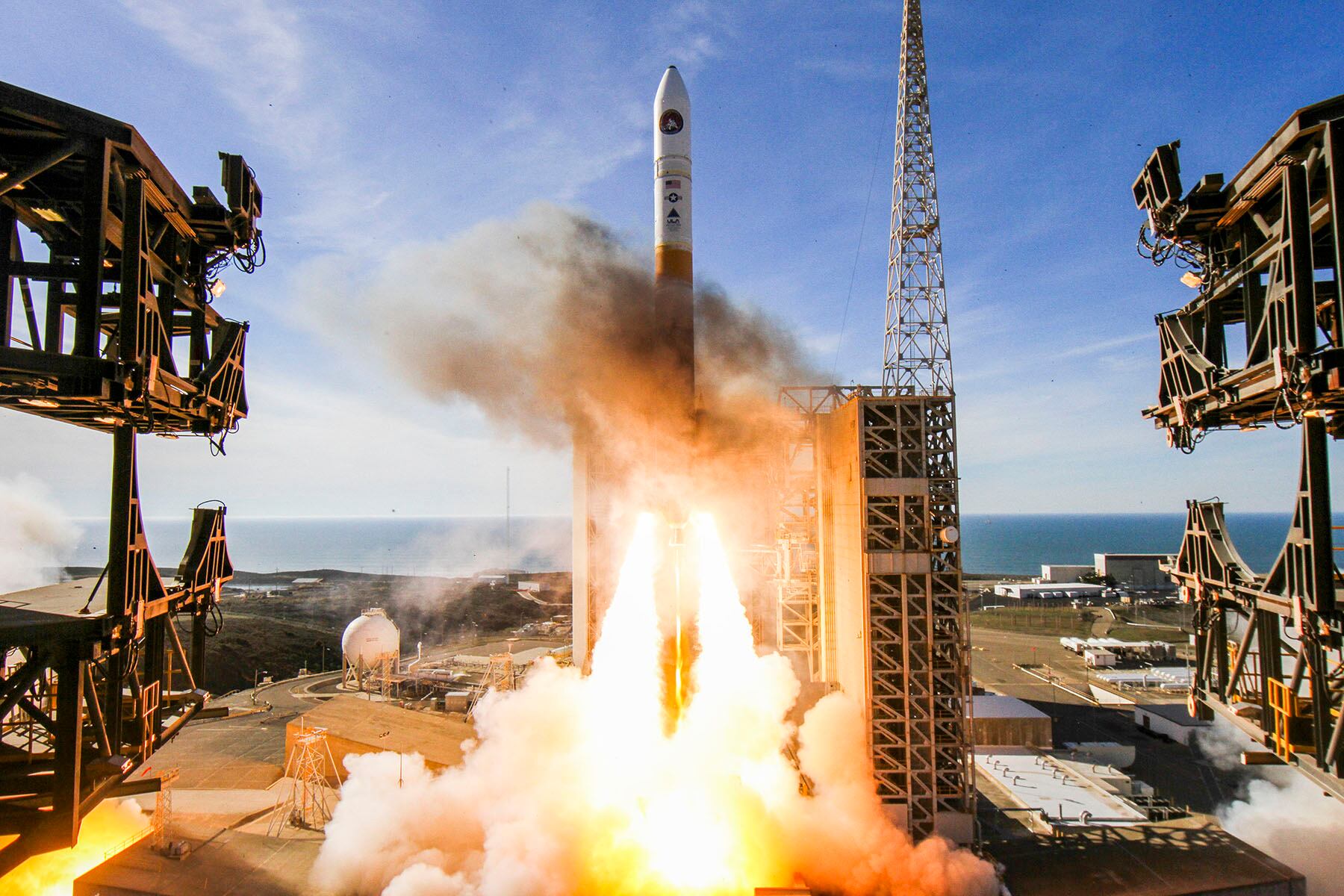WASHINGTON — The Senate Armed Services Committee has approved the establishment of a Space Force in its defense authorization bill, potentially setting up a clash with House lawmakers who have questioned the need for a sixth military branch for space.
“We know space is a warfighting domain, so we are setting up the U.S. Space Force with the Air Force. Our strategy will set the Space Force up for success now and in the future by minimizing bureaucracy,” Senate Armed Services Committee Chairman Jim Inhofe, R-Okla., said in a statement.
RELATED

Although Senate defense authorizers are backing the formation of new service and will fully fund it at $72.4 million, its proposed structure differs from that put forward in the White House’s legislative proposal.
Under the proposal approved by President Donald Trump, the Space Force would be organized under the Department of the Air Force. It would have a civilian undersecretary of the Air Force for space, who would report to the Air Force secretary. Its highest-ranking military officer, the Space Force chief of staff, would also report to the Air Force secretary and be a member of the Joint Chiefs of Staff.
The SASC proposal, however, does not authorize an undersecretary of the Air Force for space, said a senior committee aide.
It also would redesignate the head of Air Force Space Command as the head of the Space Force and would institute a slower path to the Joint Chiefs of Staff.
In the first year, that individual would report to the Air Force chief of staff and attend joint chiefs sessions only when invited to speak about space topics. He would also be appointed head of U.S. Space Command, according to a summary of the SASC bill.
In the years following, the Space Force commander would report directly to the Air Force secretary and become a full and permanent member of the Joint Chiefs of Staff. Additionally, he or she would no longer serve as the head of U.S. Space Command, and another general would be appointed to that post.
“We didn’t think that immediately this guy should be sitting on the Joint Staff” while simultaneously working to establish a new service and a unified command, a senior committee aide said. “This is a big feat, and it takes some time.”
The aide stated that the intent isn’t to slow down the creation of the Space Force, but to give the Defense Department ample time and breathing room to make decisions on its structure. The legislation requires department leaders meet monthly with the committee to review the progress on space reorganization, giving them an opportunity to ask for more funding or resources.
“I think it’s responsible to take this thing at a pace that makes sense,” the aide said. “If you even look at their original proposal, they themselves ask for a lot of authority to take a lot of time to figure this all out because they didn’t have it all figured out. We recognized they didn’t.”
Instead of creating an Air Force undersecretary for space, SASC would create two new civilian positions.
The first, the assistant secretary of defense for space policy, would work inside the Office of the Secretary of Defense and would be responsible for setting major policies, including answering long-standing questions of how and when the U.S. military should respond to threats in space, another aide said.
The bill also redesignates the principal assistant to the secretary of the Air Force for space, as the principal assistant for space acquisition. The aide said this position would act as a space acquisition executive who oversees the efforts of Space and Missile Systems Command, the Space Development Agency, and the Space Rapid Capabilities Office.
One question is how SASC’s plan will impact space operators across the joint force.
RELATED

The bill prohibits the addition of military or civilian personnel to the military in order to form the Space Force. Instead, “the use of existing personnel within the Air Force will provide the requisite staff for the establishment of the United States Space Force,” its summary said.
However, this raises questions about whether Navy and Army space operators will be a part of the Space Force and how the new space service will ensure joint space requirements are met. Committee aides declined to comment on the bill’s effect on those services.
The restriction on adding new personnel to the Space Force is also a departure from the Trump administration’s proposal. According to the president’s fiscal 2020 budget request, the Space Force, U.S. Space Command and the Space Development Agency will need additional workers to staff those new offices.
According to the request, the Air Force would transfer 120 uniformed and civilian personnel to the Space Force in FY20. In addition, 40 new detailees would be assigned to the service.
U.S. Space Command would require 617 personnel for its operations in FY20, with 587 transferring from other military space organizations like the National Space Defense Center, Joint Force Space Component Command and the Joint Navigation Warfare Center.
To stand up the SDA, the Pentagon predicts it will transfer 20 people and add 30 employees to the mix.
The road ahead for Space Force
Because SASC and its counterpart, the House Armed Services Committee, are responsible for helming the annual defense policy bill, they are charged with deciding whether to approve the department’s Space Force proposal.
HASC has yet to release its version of the policy bill, and it’s unclear whether it will be at odds with the Senate on standing up a new service.
Its chairman, Rep. Adam Smith, D-Wash., is a skeptic of the Space Force. However, HASC’s head of the Strategic Forces Subcommittee, Rep. Jim Cooper, D-Tenn., has been a major advocate for a separate space service.
The defense spending bills, which allocate money and are set by the House and Senate Appropriations committees, could prove to be another barrier. In its FY20 draft legislation, House appropriators allotted $15 million for the Space Force, not the full $72 million requested.
Valerie Insinna is Defense News' air warfare reporter. She previously worked the Navy/congressional beats for Defense Daily, which followed almost three years as a staff writer for National Defense Magazine. Prior to that, she worked as an editorial assistant for the Tokyo Shimbun’s Washington bureau.






